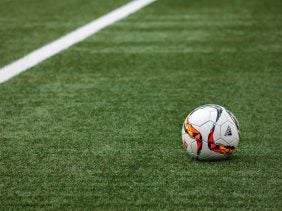The 12 Biggest Running Myths You Need to Forget
 ©BROOK PIFER
©BROOK PIFER
Running is one of the most popular sports in Germany, with nearly 6 million Germans across all age groups regularly lacing up their running shoes. Part of the reason why the sport is so popular at home and abroad is that it’s easy to get into. All you need is a pair of sneakers (and some people maintain you don’t even need those). However, as uncomplicated as running may seem at first glance, it’s anything but easy. No matter how long you’ve been running, the sport is tough – and that’s why there are many opinions and myths about how you should run to make it easier.
We shed some light on the matter and separate truth from fiction. The right answers will bring more clarity to your everyday running.
Myth #1 Running Damages Your Joints
This can happen if you go from 0 to 100 in a few months, your shoes don’t suit your running style, or you have an individual predisposition or factors that make joint problems more likely.
Otherwise, studies show that running supports the nutrient supply to joint cartilage; the protective tissue that prevents two bones from rubbing against each other. Joint cartilage also grows in line with what’s demanded of it, and studies indicate that runners do not have a higher risk of arthritis than other people.
However, it’s not completely wrong to think that a lot of running can be strenuous on your hips, knees, and ankles – especially if you tend to run on solid surfaces such as concrete. If you run regularly, increase the volume and intensity slowly rather than making big jumps in mileage. This will help you to maintain good technique. Go to the gym regularly to work your core and leg muscles – especially your glutes – as they can protect and support your joints. Looking for a workout? Click here for 15 strength exercises for runners.
Myth #2 Stretching Prevents Sore Muscles
But that isn’t true. The best way to prevent painfully sore muscles is to warm down slowly. This supports the breakdown of lactate and the removal of other metabolic end products. Lactate is the salt of lactic acid and is produced more during intense exercise, which causes your muscles to become overly acidic. If your legs are burning and get tired quickly, then lactate is in play. Although this process can take place independently of sore muscles, they often go hand in hand, especially for beginners. Increased lactate production can increase your recovery time.
By the way, trying to run off sore muscles doesn’t work. If you train with sore muscles, you further damage their structures, overload them and increase the risk of injury. Luckily, our editorial team has some good tips on how to get rid of sore muscles.
The only way to avoid them is to slow down and/or run shorter distances. If long distances are your goal, but you still want to avoid muscle soreness, schedule longer workouts and consistently increase the intensity or volume of training by no more than 10% each week. But sore muscles aren’t that bad either, and they are definitely good mental training – because running a marathon won’t be a piece of cake either.
Myth #3 Fat Burning Only Starts After 30 Minutes
Fat burning starts with your first step. Although it initially only accounts for a smaller proportion of the energy you use, the longer you train in the aerobic zone, the more energy your body gains from fat.
Aerobic training means that your body converts fat and carbohydrates into energy with the help of oxygen, which is available when you run.
Put simply, anaerobic training means that you are running too fast for your body to have time to use oxygen to convert energy. That means that using fat as an energy source takes too long, so your body only burns carbohydrates.
Myth #4 The Longer, the Better
The myth persists among long-distance running newcomers that high-mileage runs are the key to success.
It’s true that long, slow endurance runs and reasonably planned high mileages per week in relation to your target distance are important. However, it’s also true that marathoners and ultra-marathoners also need short, fast runs to increase their basic speed and build up a good tolerance for the monotony of running long distances.
Myth #5 Strength Training Slows You Down
Actually, the opposite is true. Strength training is essential for a good running style, reduces the risk of injury, and thus allows you to train more effectively and perform better. Functional training is ideal for runners.
We do have to concede that there’s a modicum of truth to this myth, however: muscle mountains who have trained for maximum strength, bodybuilding or the like are likely to find running harder rather than easier.
Myth #6 Walking Doesn’t Count
Everybody started out small, and walking breaks are an integral part of starting or returning to running – and a sign of smart training planning. They are easy on your joints, protect against overuse injuries, build your stamina, and thus allow you to train more efficiently.
Running with walking breaks is a form of interval training, which is known for its high afterburn effect and its positive influence on increasing speed and performance.
Myth #7 Stretching Before Running Is Essential
This myth is clearly false; sports scientists now know that static stretching lowers muscle tone and therefore performance. If stretching before you run feels good for you, then opt for dynamic stretching. This is where you slowly move during the stretch, unlike static stretching, where you hold a position almost without moving.
Nevertheless, stretching after running or as an isolated training session is an integral part of any running workout. That’s simply because it balances out your running by relieving the muscle tension you built up during your workout. If you want to know how that works, then read our Ultimate Mobility & Stretching Guide for Runners.
Myth #8 Running Is the Best Exercise for Losing Weight
There’s a grain of truth here too, as running burns a lot of calories – in half an hour of medium-fast jogging, a man weighing 80 kg can burn around 400 kcal. Running is also practical; simply put on your shoes, leave the house, and off you go. However, running alone will not help you achieve and maintain your dream figure. Strength training increases your basal metabolic rate in the long run and gets your body in shape. Combine it with HIIT training and running for a guarantee of success.
Myth #9 Running in the Rain Increases the Risk of Catching a Cold
When temperatures drop in the fall and winter, this myth is the favorite excuse of those who like to complain about running. Cold viruses are primarily spread indoors, and the cold won’t cause an illness if you’re otherwise healthy. But even though running on a cool, wet day won’t make you sick, there are other precautions you should take. It’s important to warm up your muscles before you run – with a few squats, for example – make sure you’ve dressed appropriately, and not stand around in the cold after your run. Here are 4 reasons why you should definitely run, even in the rain and cold!
Myth #10 The More Cushioned, the Better
This running myth refers to the cushioning of running shoes and is gradually losing popularity. Although cushioning is often justified, especially for heavy runners, it generally makes people more likely to heel strike than if they run in less cushioned shoes – especially in conjunction with overstriding. When it comes to cushioning, it’s important to find a shoe that’s exactly right for you. The best way to do this is with professional advice from a running shoe store. These tips will guide you toward finding the right running shoes.
Myth #11 Barefoot Shoes Are the Best Running Shoes
Every myth also has its counterpart; in this case, it’s that barefoot running is the only form of real running. Essentially, barefoot shoes can be a great choice for some people, while others may feel more comfortable with shoes that offer more cushioning and stability. If you want to switch to barefoot shoes, you should gradually get your feet used to them over a few years. Until you reach that point, you will definitely benefit from the protection and support offered by an adequately cushioned running shoe, especially on more intensive or longer runs. The mix is what does it!
Find out more: Running Barefoot – Feet Are the Better Shoes
Myth #12 Running Is Boring
Absolutely not true. Running has so much potential – discovering new routes, playing with running ABC and different paces, listening to podcasts, social runs with friends, or making that overdue phone call to your family. So, give your runs a purpose.
More interesting articles from foodspring:
- How to Start Jogging: Everything you need to know
- Easy Running Plans to Ensure you Crush your First 30 Minutes, 5K, or 10K
- 9 Surprising Tips For a Fast Recovery After Your Run
Sources for this article
We at foodspring use only high-quality sources, including peer-reviewed studies, to support the facts within our articles. Read our editorial policy to learn more about how we fact-check and keep our content accurate, reliable, and trustworthy.






















